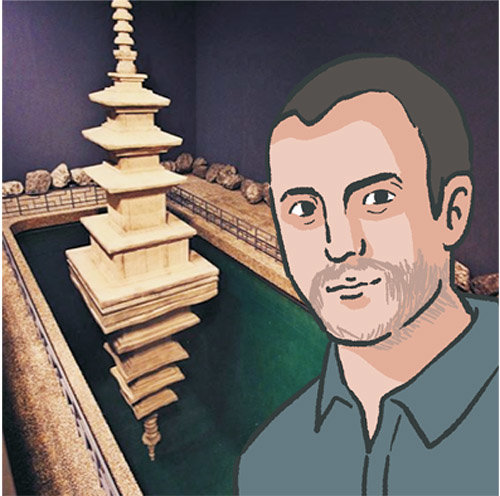Consolation offered by shadow of Muyeong pagoda
Consolation offered by shadow of Muyeong pagoda
Posted January. 22, 2020 07:52,
Updated January. 22, 2020 07:52

Artists are highly sensitive to sadness. Argentinean installation artist Leandro Erlich’s recent work is a beautiful example of such nature of artists. He has given a lot of thoughts to the sad fable involving Seokgatap pagoda, which he heard by chance. “Shadow of the Pagoda” showcased at the Buk-Seoul Museum of Art is the result.
The story about Asadal and Asanyeo varies depending on who is telling the story, but its basic structure is not much different. About 1,200 years ago, stonemason Asadal from Baekje was working at Bulguksa temple in Silla to build Dabotap and Seokgatap pagodas. After spending years alone missing her husband, his wife Asanyeo came to Silla to find him. By then, he was finished with Dabotap and was working on Seokgatap. However, she was not allowed to meet her husband by the authorities at Bulguksa temple, which were concerned that she might slow down his work. Furthermore, they didn’t even inform Asadal of his wife’s arrival. Asanyeo was devastated. Then, someone told her to wait by a reservoir in a nearby village. The name of the reservoir is Yeongji, or a “shadow reservoir,” which means the shadow of Seokgatap pagoda will be supposedly reflected in the reservoir once it is finished. However, no matter how long she waited, no shadow appeared because Seokgatap is a Muyeong pagoda, meaning a pagoda with no shadow. Once Asadal finished building the pagoda and went to the reservoir to find her, she was already dead. She drowned in the water waiting endlessly for a shadow to show up.
Erlich wanted to console them by creating a shadow of the pagoda, which led to his work “Shadow of the Pagoda.” From the top, it looks like Seokgatap is casting a shadow over the water. However, from the bottom, the audience can see that what appears to be shadow is actually another pagoda hung upside-down and connected to the bottom of the upper pagoda. There is a three-centimeter acrylic panel holding water between the two pagodas, which creates the shadow effect from the top. This is Erlich’s way to comfort Asanyeo’s grieving soul – perhaps still wandering – and Asadal’s bottomless sorrow in the face of his loving wife’s death. The Argentinean artist’s way of thinking about a fable of a foreign country is ever so kind-hearted.







